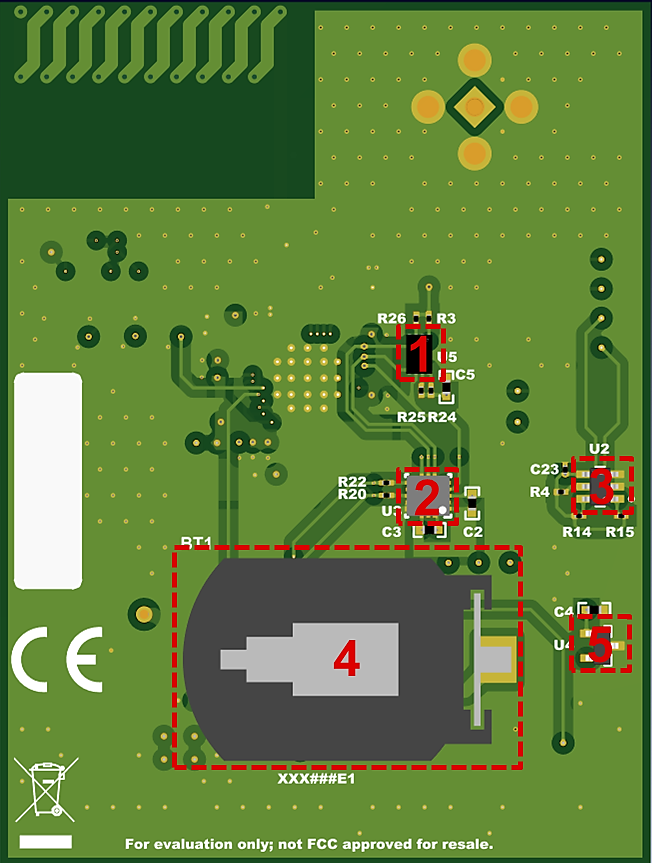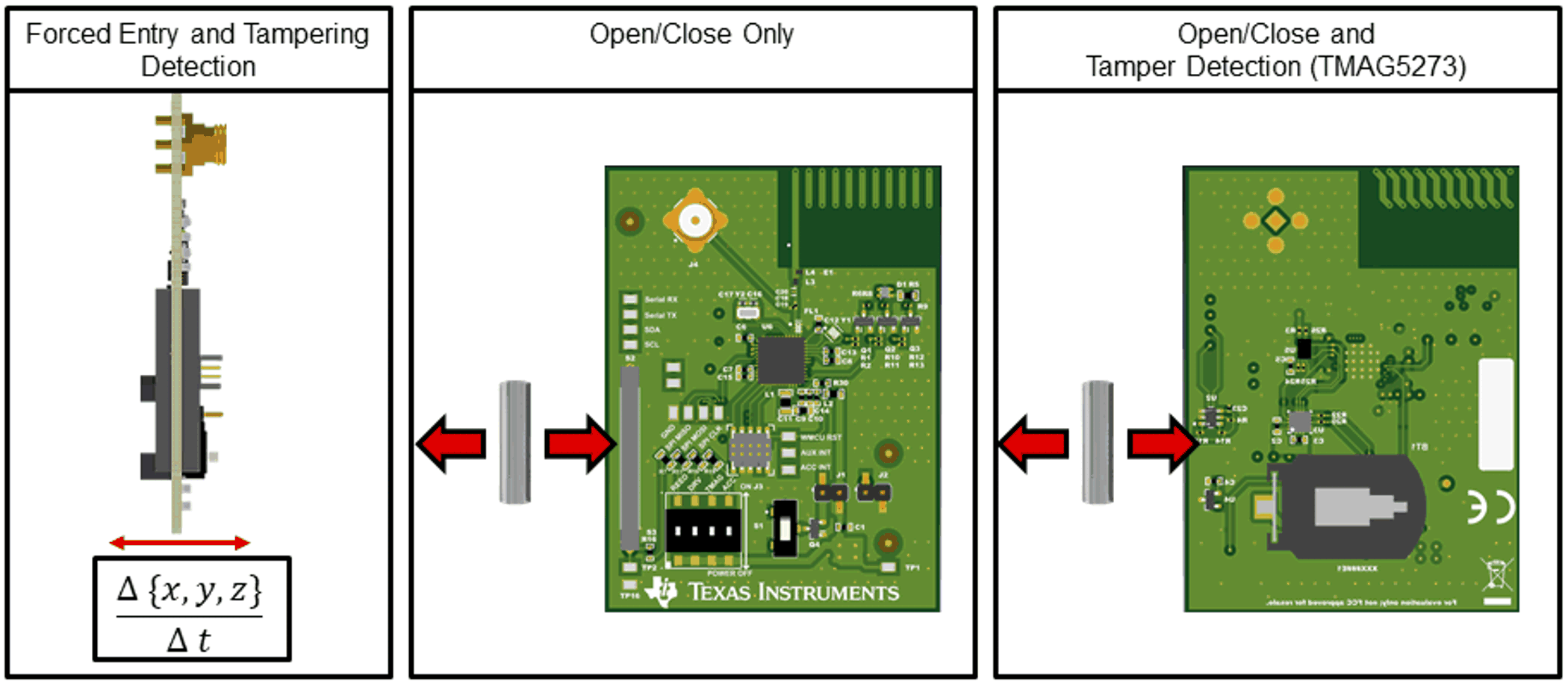SLYA073 December 2022 CC1312R , DRV5032 , TMAG5273
2.2 Bottom-Side Board Overview
Figure 2-3 shows the bottom view of the door and window sensor evaluation platform.
 Figure 2-3 Door and Window Sensor
Evaluation Platform Bottom View
Figure 2-3 Door and Window Sensor
Evaluation Platform Bottom ViewThe following list describes the labels in Figure 2-3.
- 8Mb CMOS Flash memory
- ADXL362 Accelerometer – used for mounting position sensing as well as tamper detection. The accelerometer communicates with the MCU via SPI.
- TMAG5273 – 3D linear Hall-effect sensor for magnetic field detection and tamper detection. The device communicates with the MCU via I2C.
- Battery Holder – battery holder for the CR2032 coin cell battery.
- DRV5032 – Hall-effect switch for magnetic field detection. Routed to a GPIO pin of the main MCU.
Most of the evaluation sensors are located on the bottom side of the board, in close proximity to the Reed switch on the top side for a more relevant comparison of performance. The DRV5032 and the TMAG5273 are located on the side next to each other, which also allows for an improved power performance combinational detection system where the TMAG5273 can be disabled, and woken up only when the DRV5032 detects a field presence. This can significantly reduce power by putting the linear Hall-effect sensor to sleep instead of continuously polling during periods of no activity. An accelerometer is also included to compliment the other sensors with respect to tampering, as well as providing a mounting profile for the placement of the board. This can be used to decipher what a normal approach of a magnetic field looks like, thus increasing the effectiveness of tamper detection of the system.
Figure 2-4 shows a summary of different event detection modes that can be realized with this evaluation platform.
 Figure 2-4 Event Detection Modes
Figure 2-4 Event Detection Modes